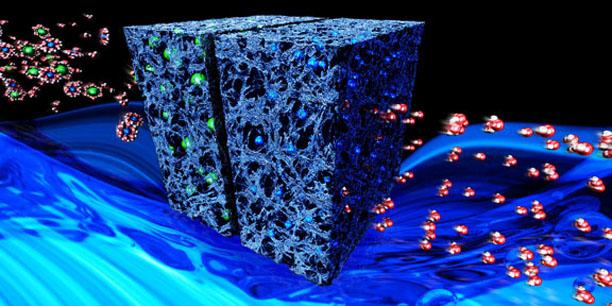According to U.S. Department of Agriculture statistics, more than one billion people lack access to clean water. The number is growing as needs for clean water increase with population growth, urbanization, pollution, and the increased use of water in households and manufacturing industries. Water scarcity and poor water quality increase the risks associated with disease and political conflicts, which makes the lack of clean water a major global crisis.
Many areas that have no access to potable water do have access to salty water in some form, including seawater, brackish surface water, or groundwater. In response, coastal cities in both developed and emerging nations are building seawater desalination facilities. The development of technologies that can produce clean drinking water from brackish sources or seawater cheaply and without substantial infrastructure demands is essential for ensuring peace and prosperity on a worldwide scale.
The most widely used desalination methods, such as reverse osmosis (RO) or multi-stage flash distillation, require large amounts of power and infrastructure to generate the pressures or temperatures needed to produce clean water.
LLNL has developed an innovative technology known as flow-through electrode capacitive desalination (FTE-CDI) that promises to unlock an almost inexhaustible water source for U.S. and global population markets. FTE-CDI represents a robust and low-maintenance path for efficiently and cost-effectively producing clean drinking water from seawater and brackish water.
FTE-CDI removes salt by applying an exceptionally low voltage (1.5 volts) to a porous electrode capacitor, along with a low-pressure pump to move water through the electrodes. Unlike "flow between" capacitive deionization the feed stream flows directly through electrode pores.
For more information of the technology, relevant publications and the research team go to Capacitive deionization. Also see a related technology: Water Softening Using Flow Through Electrode Capacitive Deionization.
LLNL anticipates that the FTE-CDI innovation will benefit the large and growing water treatment and desalination sector through greater efficiency, lower energy costs, substantial operational savings, and reduced capital costs.
- FTE-CDI system possesses both ultra-high capacitance (>125 F/g), and low resistance to water flow.
- Less clogging of carbon electrodes (flow pores are ~1000 times larger than those of RO membranes)
- Less susceptibility of carbon electrodes to degradation in chemically aggressive environments
- Low temperature requirements
- Energy recovery for FTE-CDI requires no moving parts and is the same for any size device.
- FTE-CDI modules can be made compatible with current RO cartridges, decreasing the cost of retrofitting existing desalination plants, and capacity can be scaled according to the number of modules used.
FTE-CDI is appropriate for any application that involves water desalination and water treatment. Such applications include:
- General liquid-separation applications
- Seawater desalination for the production of drinking water
- Wastewater and recycled water reclamation for the production of water
- Agriculture, manufacturing, and industrial processes
- Home and office water purification systems
Another important application is water purification for coal-bed methane plants. Water discharge from such plants is brackish, and it includes high levels of other impurities and contaminants. RO membranes have performed poorly in this application principally as a consequence of fouling. No good solution for processing such water exists at present. The excellent robustness of carbon FTE-CDI electrodes makes our method a good candidate for this application. Since efficiency is not expected to decrease for smaller units, this technology should further lend itself to portable applications, such as required for disaster relief or military use.
A prototype system has been developed and tested.
US Patent No. 8398840, Capacitive de-ionization electrode published 03/19/2013
US Patent No. 9758392 Phased charging and discharging in capacitive desalination published 09/12/2017
US Patent No. 10008338 High temperature oxygen treated carbon aerogels published 06/26/2018
US Patent No. 11407663 Flow-through electrode capacitive deionization cell published 08/09/2022
US Patent No. 10875792 System and method for high efficiency electrochemical desalination published 12/29/2020
US Patent No. 11358883 System and method for using ultramicroporous carbon for the selective removal of nitrate with capacitive deionization published 06/14/2022


